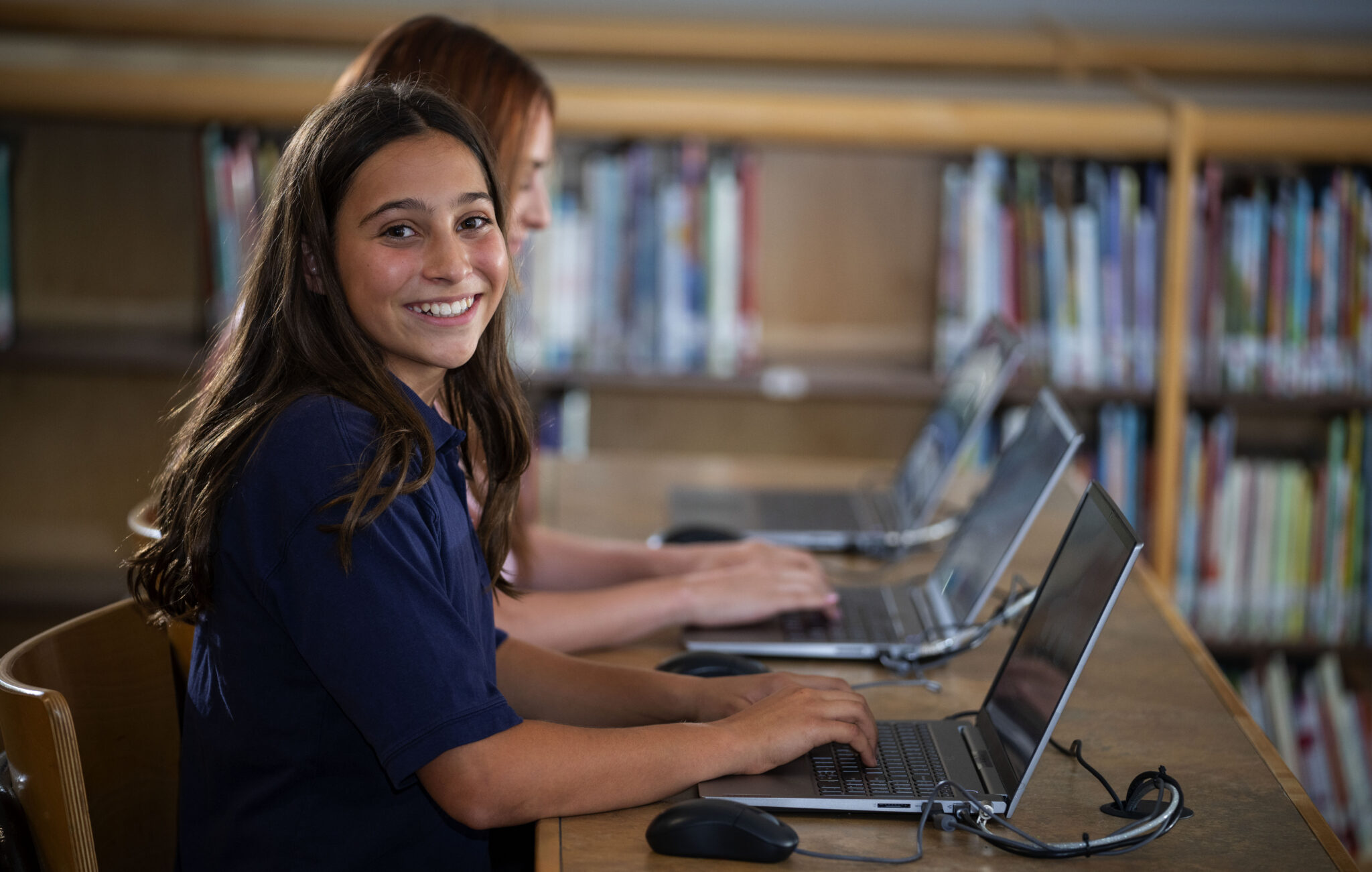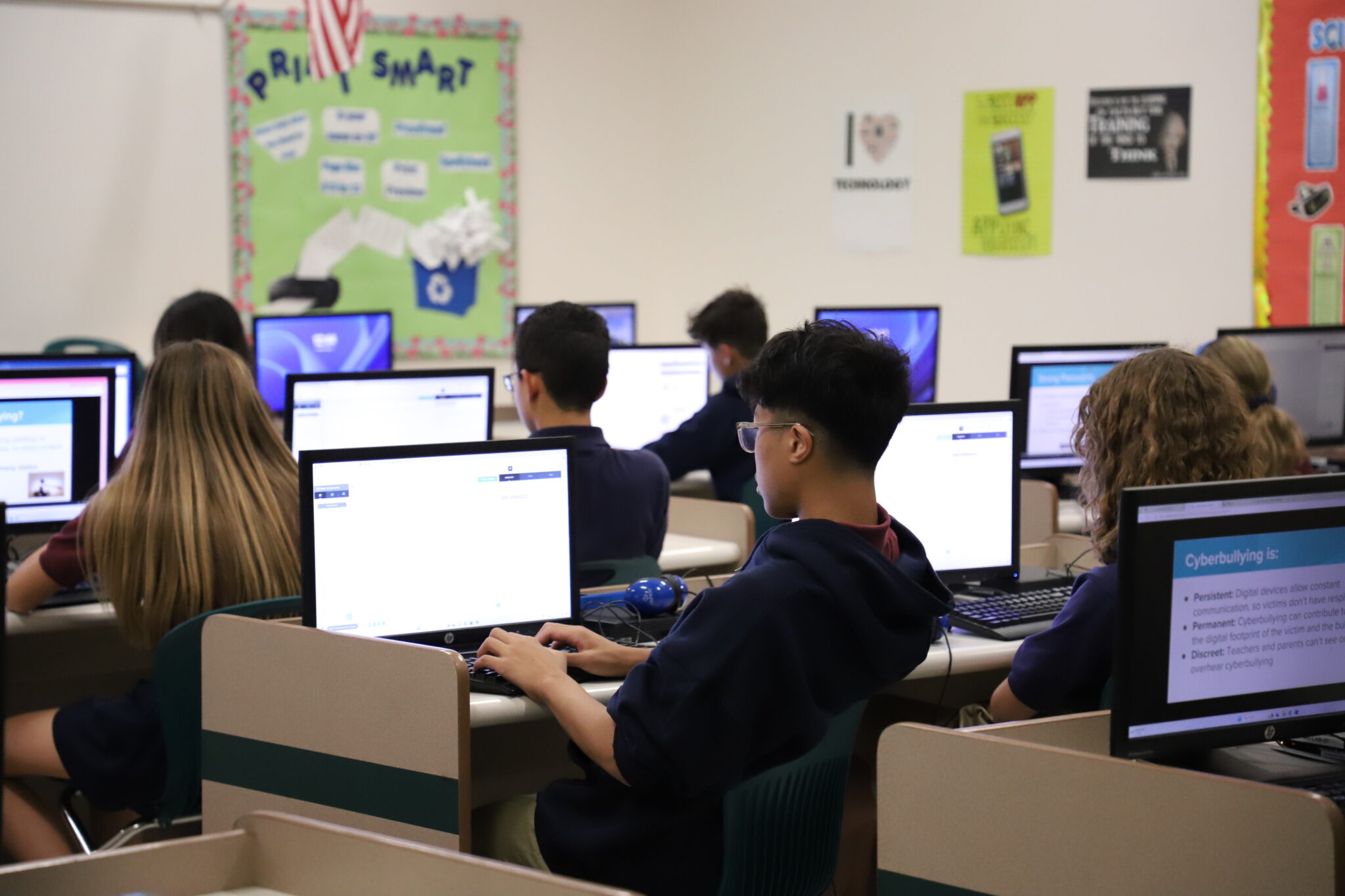Schedule a Tour
Seventh Grade
Eighth Grade
Sixth Grade Facts At A Glance
- Age range and cut off: 11 years old to 12 years old.
- School hours: Classes start at 8:10am and dismisses at 3:32pm.
- Classroom size: 22 students
- Student to Faculty ratio: 22:1
Sixth Grade FAQ

Do parents have to provide their child’s school supplies?
As a convenience to parents, the school provides all necessary school supplies for the year at a nominal fee.
When can parents purchase uniforms?
Uniforms can be purchased from our on campus Uniform Store all year but primarily during the summer. Orders can be placed online, and the uniforms picked up in the store or delivered to the children in their respective classrooms.
Can students purchase snacks?
The student store is open before school, at lunch and after school for students to purchase snacks. All students have a personal account that parents can add money online for snack purchases.
Does the school provide transportation?
The school does not provide transportation, but is conveniently located in the center of the Las Vegas valley, easily accessible via Jones Blvd. and Desert Inn Road.

